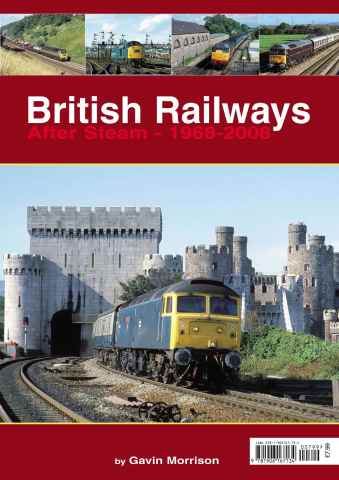
Mortons Books | British Railways After Steam...
...1968-2008
After all the events and publicity in the media over the last 12 months, connected to the 40 years since the end of steam on British Railways, I was delighted to be given the opportunity to put this book together, showing how the railways have changed in the 40 years since 1968, with particular emphasis on the 1980s and 1990s.
Whilst the public’s appetite for steam in preservation and on the main line shows no signs of dwindling, it is to the great credit of Network Rail and many others that steam can still be seen over most parts of the country, especially at places such as on the East and West Coast main lines where the 125mph railway exists.
The public’s expectations of train travel in 2008 is quite rightly much more demanding than back in 1968 in terms of comfort, frequency and speed. Railways after 1968 did not change all that much except for a few exceptions until the arrival of the HSTs as far as the travelling public was concerned. These trains completely changed the expectations of the public, and indeed saved the railway passenger services from what could have become a disastrous decline.
Gradually from the mid 1970s to the 1990s, the railways completely changed in character. The old infrastructure such as signalboxes and old style level crossing gates gradually disappeared, the singling of many lines took place, and the number of un-manned stations increased dramatically resulting in a railway system being run from main control centres rather than the local areas/stations. Whilst this undoubtedly had the advantage of reducing costs, one of the downsides was that because there were so few railway employees around, vandalism increased dramatically in many areas.
As the diesel and electric multiple units increased in numbers, so the quantity of locomotives declined, resulting in the closure of many maintenance depots, and main line workshops, although a few still remain but in a very much reduced form...
read more
read less
As a subscriber you'll receive the following benefits:
• A discount off the RRP of your magazine
• Your magazine delivered to your device each month
• You'll never miss an issue
• You’re protected from price rises that may happen later in the year
You'll receive 8 issues during a 1 year Mortons Books magazine subscription.
Note: Digital editions do not include the covermount items or supplements you would find with printed copies.
Articles in this issue
Below is a selection of articles in Mortons Books British Railways After Steam....